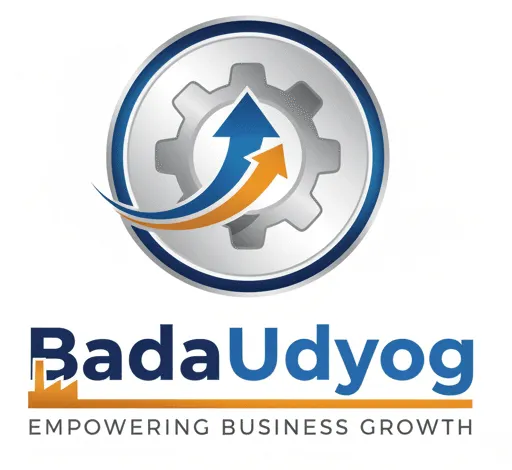What Is Repo Rate In Home Loan The repo rate plays a crucial role in shaping the landscape of home loans, influencing the interest rates that borrowers encounter when seeking financing for their property investments. Understanding the intricacies of the repo rate is essential for homeowners, as its fluctuations can directly impact the cost of borrowing and monthly mortgage payments.
In this comprehensive guide, we delve into the fundamentals of the repo rate, its relationship with home loan interest rates, and the various factors that contribute to its changes. By gaining insight into this key monetary policy tool, readers will be empowered to make informed decisions regarding their home loan arrangements in response to repo rate dynamics.
Introduction to What Is Repo Rate In Home Loan
What is Repo Rate?
What Is Repo Rate In Home Loan Repo Rate is like the Beyoncé of the financial world – it’s a key interest rate at which the central bank lends money to commercial banks. Basically, it sets the tone for the whole interest rate symphony.
Role of Repo Rate in Monetary Policy
What Is Repo Rate In Home Loan Think of the Repo Rate as the puppet master pulling the strings in the monetary policy puppet show. Changes in the Repo Rate by the central bank can either tighten or loosen the money supply, affecting inflation, economic growth, and other fancy financial stuff.
Impact of Repo Rate on Home Loans
How Repo Rate Influences Home Loan Interest Rates
What Is Repo Rate In Home Loan When the Repo Rate does a little cha-cha-cha, home loan interest rates do the tango – they follow suit. Changes in the Repo Rate can result in your monthly mortgage payments feeling a bit heavier or lighter on your wallet.
Historical Trends of Repo Rate and Home Loan Rates
What Is Repo Rate In Home Loan Looking back at the historical dance moves of the Repo Rate and home loan rates can give you a clue about what to expect in the future. It’s like watching a financial soap opera with plenty of twists and turns.
Factors Influencing Repo Rate Changes
Economic Indicators and Repo Rate Adjustments
What Is Repo Rate In Home Loan Economic indicators like GDP growth, inflation, and employment numbers are the crystal ball gazers that influence whether the central bank will raise or lower the Repo Rate. It’s like a financial crystal maze, but with less glitter.
Central Bank Decision-making Process
What Is Repo Rate In Home Loan Ever wonder what goes on behind the closed doors of the central bank? They’re like financial wizards analyzing data, economic trends, and their morning coffee to decide the fate of the Repo Rate. It’s like a high-stakes poker game, but instead of chips, they’re betting on the economy.
Relationship Between Repo Rate and Home Loan Interest Rates

Mechanism of Transmission of Repo Rate Changes to Home Loan Rates
What Is Repo Rate In Home Loan Just like a whisper down the lane, changes in the Repo Rate eventually make their way to your home loan interest rates. It’s a financial game of telephone where your wallet is the final receiver of the message.
Comparison with Other Interest Rate Benchmarks
What Is Repo Rate In Home Loan Repo Rate isn’t the only player in town – there are other interest rate benchmarks like the MCLR and base rate. Comparing these can help you understand where your home loan interest rates stand in the grand scheme of the financial universe. It’s like a financial bake-off where everyone wants a piece of the interest rate pie.
How Changes in Repo Rate Affect Home Loan Borrowers
What Is Repo Rate In Home Loan Repo rate changes can shake things up for home loan borrowers. Let’s explore how it impacts them.
Impact on EMI Payments
What Is Repo Rate In Home Loan When the repo rate dances, your EMI payments might do the cha-cha too. Higher repo rates mean higher EMI payments, and vice versa.
Strategies for Borrowers to Navigate Rate Changes
What Is Repo Rate In Home Loan Borrowers, it’s time to put on your strategic hats. From fixing your interest rate to opting for a floating rate, there are ways to navigate these rate rollercoasters.
Strategies for Managing Home Loans During Repo Rate Fluctuations
Repo rates jumping around like a squirrel on caffeine? Here’s how you can keep your home loan ship steady.
Refinancing Options for Home Loan Borrowers
When the repo rate does the tango, consider refinancing to lock in a better deal. It’s like giving your loan a facelift.
Building a Flexible Repayment Plan
Be the yoga guru of home loans with a flexible repayment plan. Adjust, twist, and bend your repayments to stay ahead of rate fluctuations.
Government Policies and Repo Rate Influence on Home Loans
Government policies and repo rates – a match made in financial heaven or chaos? Let’s untangle this web.
Government Interventions to Stabilize Home Loan Market
When repo rates throw a party, governments often crash it with interventions to keep the home loan market stable. It’s like the ultimate financial bouncer.
Regulatory Measures Impacting Repo Rate Dynamics
Regulations can be the DJ at the repo rate party, playing tunes that either boost or temper the rate dynamics. It’s like a financial rave, but with more paperwork.
Conclusion: Understanding the Significance of Repo Rate in Home Loans
Repo rate isn’t just a fancy financial term – it’s the heartbeat of your home loan. Understanding its rhythm can help you dance through the ups and downs of the mortgage market.In conclusion, the repo rate serves as a critical component in the realm of home loans, exerting a significant influence on interest rates and repayment obligations for borrowers.
By grasping the interplay between repo rate adjustments and home loan terms, individuals can proactively navigate market fluctuations and optimize their financial strategies. Armed with a deeper understanding of the repo rate’s implications, homeowners can adapt to changing economic conditions and make well-informed decisions to manage their home loans effectively.
FAQ
How does the repo rate impact my home loan interest rate?
The repo rate, which is the rate at which the central bank lends money to commercial banks, has a direct influence on home loan interest rates. When the repo rate increases, banks typically raise their lending rates to maintain profitability, which can lead to higher home loan interest rates for borrowers. Conversely, if the repo rate decreases, banks may lower their lending rates, making home loans more affordable. Therefore, fluctuations in the repo rate can significantly affect your monthly mortgage payments and overall loan cost.
Can I renegotiate my home loan terms in response to repo rate changes?
Yes, you can renegotiate your home loan terms in response to changes in the repo rate. If interest rates decrease, you may approach your lender to request a revision of your interest rate to take advantage of lower rates. This process may involve a fee and depends on the lender’s policies, so it’s advisable to review your loan agreement and consult with your bank to understand the options available for renegotiation.
Are there government schemes or initiatives that can mitigate the effects of repo rate fluctuations on my home loan?
Yes, several government schemes can help mitigate the impact of repo rate fluctuations on home loans. For instance, schemes like PMAY (Pradhan Mantri Awas Yojana) offer interest subsidies on home loans for eligible borrowers, making housing more affordable. Additionally, some banks may have specific products designed to shield borrowers from drastic rate changes, so it’s worth researching available options and consulting with financial advisors to identify the best ways to minimize the effects of interest rate fluctuations on your home loan.

